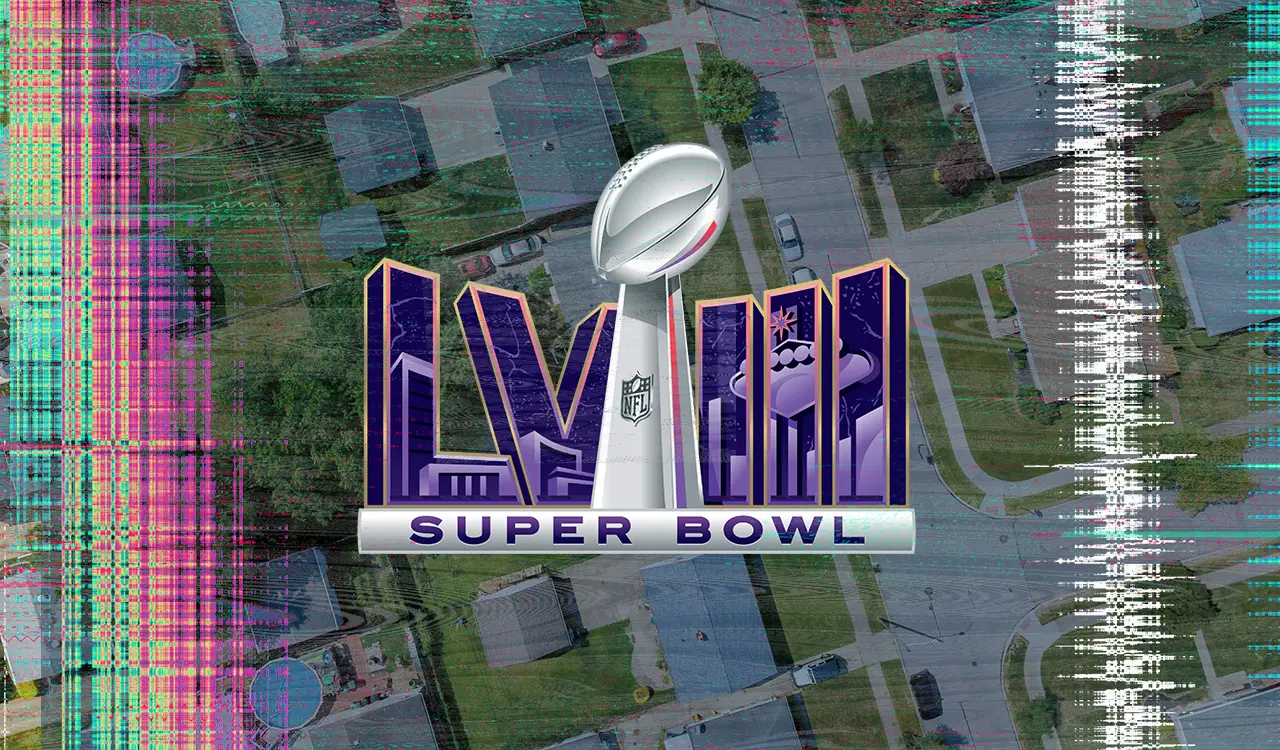At TRR, we take the long view: What does stuff mean and why does it matter? In that spirit, here’s our take on the freefall of Superbowl LVIII ads.
Certainly, we live with the memories of Apple’s 1984 commercial (could it really be 40 years ago?), the Budweiser frogs, and the first time we saw Mean Joe Greene toss that shirt to the kid who gave him a Coke (that kid by the way turned 50 a while back). We’re always going to think they were the best and nothing these days is anywhere near as good.
After all the celebrities from J.Lo and Beyoncé to Arnold Schwarzenegger and Tom Brady (twice no less); after all the funny and not-so-funny gags; after all the tech, Doritos and Robert F. Kennedy Jr channeling his father and uncle (to what would no doubt be their utter horror), exactly what do the dozens of commercials that ran during last weekend’s Super Bowl tell us about America and the consumers who worship this annual ritual?
The Super Bowl Is More than a Football Game
The Super Bowl is America’s last mass media moment when so many Americans are doing the same thing at the same time. Back in the days of only three TV networks, presidential elections, or even the World Series, there were many more of these moments — but no longer.
In our digital hyper-connected era, we do things on our own schedules, and they rarely coincide with anybody else’s. This is why the big game presents a great snapshot of our national consciousness and provides an opportunity as fair as anything else on what appeals to us as consumers of goods and services. And since football is all about keeping score, here’s a rundown of the takeaways from the four hours of game time. We’ll leave out the equally-as-long pre-game shows, post-game celebrations and any artistic critique of the half-time show. We will also skip the obsession with America’s sweetheart millennial couple, Taylor Swift and Travis Kelce — our modern-day Becky Thatcher and Tom Sawyer romance propelled by 21st-century billionaire steroids.
1. Laugh Baby Laugh
Of the approximately 60 TV spots that ran from the coin toss to the overtime touchdown win by the Kansas City Chiefs, just under half – 27 by my count – took a humorous tone. Which is not to say they were all funny. In fact, many fell painfully flat and more than a few elicited confusion about exactly what the joke was. At $7 million for a 30-second spot, there’s nothing funny about gags that make…well, make you gag.
Still, humor (or at least attempted humor) has been part of the Super Bowl zeitgeist for decades and it makes you wonder why so much advertising the rest of the year doesn’t even try to be amusing. This goes for video and online but especially for print and especially for advertisers in the retail and consumer products sector. We all like to laugh and when we do, we might actually buy what they’re selling. But when humor is manipulative, inauthentic and basically a cheap shot, it makes your brand look irrelevant…and often just plain stupid.
2. Celebs on Parade
Another Super Bowl staple has been the cascade of commercials featuring a celebrity. Sometimes it’s a revered sports figure, sometimes an icon from the entertainment field and sometimes people who are celebrities paid for just for being celebrities (we’re talking to you, Kris Jenner). Most have some instant recognition while increasingly they are from niche or fringe fields that seem to coincide with the target audience for what’s being shilled.
But more and more, celebrities are featured who have absolutely nothing to do with the advertised product (hate to pick on you Kris, but when was the last time you ate an Oreo?). Their larger-than-life personas often overwhelm the commercial –as short as 15 seconds, 30 at most usually – to the extent that you might remember the person but haven’t a clue what the product is.
Celebs who have a vague connection to what’s being sold have been around for generations. Chances are Joe DiMaggio didn’t make a lot of Mister Coffee but if he did, he probably did it well and you trusted him to help you make yours. On the surface of it, the celebrities were trying (too hard) to show us that they’re regular guys … just like us. Kris…well, you get it.
3. The Mix is Much More Mixed
It wasn’t all that long ago that ads for cars, beer and salty snacks dominated the Super Bowl broadcasts. They were a mainstay and certainly, the latter two reflected what was being consumed on the other side of the TV screen. No doubt that hasn’t changed much but these commodities are no longer the cornerstones of the commercial breaks.
By our somewhat semi-vigilant viewing, we counted 12 food and snack ads, five for vehicles and just four for beer…including the ubiquitous Budweiser Clydesdales who seem to be showing up on these broadcasts more than Coach Andy Reid. Compare that with nearly 20 for tech companies – from online housing search engines and web services to food ordering sites and phone networks. And that says about it all for our 2024 consumer culture.
4. Socially Responsible… Sort of
Super Bowls have never been bastions of responsibility for social, cultural, and ecological movements — and that was the case last Sunday. Depending on how you define such, we counted less than ten spots that took this storyline, despite corporate America’s stated belief in such initiatives. And it should be noted that two of them were emotional touch points from the NFL itself promoting its own social programs. Two others were from the long-running Hobby Lobby-funded “Jesus, He Gets Us” campaign that certainly says legions about our sectarian American culture.
One of the oddest spots that fell under this general heading was from Pfizer, the pharmaceutical company promoting both itself and its work in cancer treatment, all to the unexpected tune of a Queen classic. This may have been meant more for investors than patients as we suspect 101 out of 100 drug users couldn’t tell you who makes the medicine they take daily. All it might have done is reinforce the belief that at $14 million for 60 seconds, Big Pharma continues to make way too much profit.
5. Remember Nostalgia?
Maybe when baby boomers were the prime target audience for sporting events, nostalgic themes were more prevalent as we all know this generation subscribes to rh “The older we get, the better we were” theory. Subsequent demographic groups may not have quite the fascination of what once was and that was reflected in the advertising mix.
Aside from the aforementioned Arnold, and his equally age-inappropriate counterparts Patrick Stewart and Mr. T (where has he been hiding for the past 20 years?), we couldn’t help but notice that the once ubiquitous use of classic pop songs was limited to Lindt chocolates, which pulled up an upbeat Perry Como selection no less. Volkswagen, in the meantime, went with a tried-and-true gimmick of highlighting the cars it used to make rather than the ones it makes now. Never encouraging. Nostalgia gets old really quickly.
6. Retail MIA
Yes, a few retailers did advertise – we noticed a Bass Pro Shops spot that seemed to be more about owning a boat than shopping for one – and the NFL (again with no doubt a friends and family rate) was promoting its licensed products. On the whole, we didn’t see any big national retailers show up.
This is especially puzzling as last year Temu – the Chinese-based mobile selling upstart – proved proof-of-concept by debuting itself and exploding its business. Want more proof that it worked? Temu was back with five – count ‘em five spots this time around, touting its ridiculously low prices that are starting to drive American ecommerce sellers (especially Amazon) crazy. This is why we expected to see Amazon on there this year, not to mention other big players like Macy’s, Kohl’s and JCPenney, all of which could use some serious high-profile attention from shoppers who have largely passed them by.
We did see a smattering of fashion, beauty and footwear brands show up but again, most were highly forgettable and lost in the sea of noise. Do you really want to be taking make-up advice from Judge Beauty…Judge Judy, get it?
7. The Best, the Worse & the Rest
The post-show quarterbacks (pun intended) were out in force earlier this week, critiquing the ads and picking the ones they thought were terrific and the ones that were no-so-much. As with movie reviews, dating apps and fashion choices, the picks were all over the place. It was absolutely fascinating to see a commercial like the BMW spot featuring Christopher Walken show up on both best-of and worst-of lists (I liked it, even though he scares the crap out of me and I’m not sure I would take his car-buying advice) while the Dunkin ad featuring Mr. & Ms. Affleck and their faithful companion Matt Damon could be found up and down the Monday morning lists.
I especially liked the references to ads like the celeb-overloaded Uber Eats spot (Jennifer Aniston was the most prominent) because that at least allowed me to remember what the ad was for. Yet, the basic premise was such a far-fetched stretch that I suspect I wasn’t alone in my skepticism.
So, what’s the big takeaway here? Obviously, advertising works…or else half a billion dollars wouldn’t have been forked over just for airtime, not counting producing the ads, all of those celeb salaries and perks — and let’s not forget the agency commission. In an age of social media, influencers and niche streaming services that are hard to find and even harder to unsubscribe from, mass media remains the big time and there’s nothing else like the Super Bowl in America.
Certainly, we live with the memories of Apple’s 1984 commercial (could it really be 40 years ago?), the Budweiser frogs, and the first time we saw Mean Joe Greene toss that shirt to the kid who gave him a Coke (that kid by the way turned 50 a while back). We’re always going to think they were the best and nothing these days is anywhere near as good.
But here’s the thing: About 125 millions of us watched the game on Sunday night and we paid as much attention to the commercials as the action on the field…maybe more. Not every ad was good…much less great. But if you’re trying to sell something there’s nothing bigger or better you can use. You just need to use it without embarrassing or confusing the viewers, or worse, the celebrities in the ads. It’s an annual litmus test of who we are as a collective culture. We would say, looking from a mile-high perspective, that the brands matter even less than the short story actors pitching them and the egos of company execs who want to see their names during the game. But fans are forgiving. There’s a reason they call it Super.





